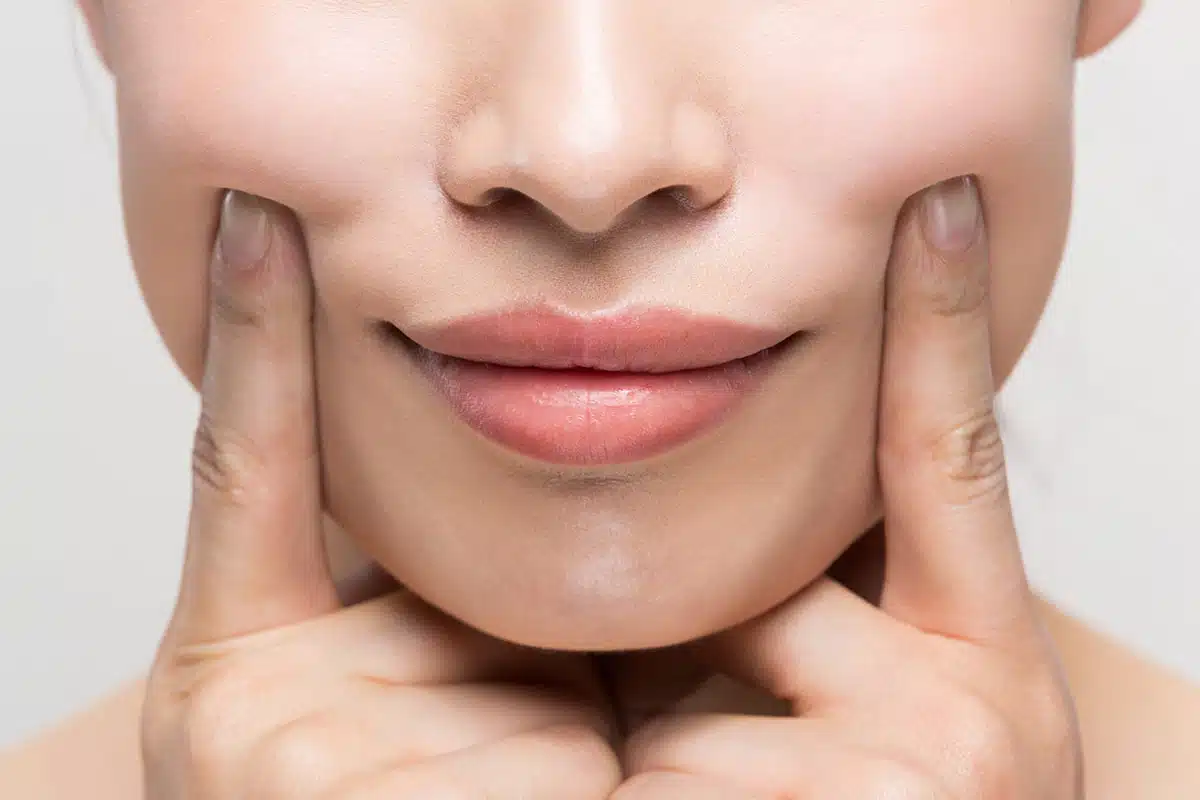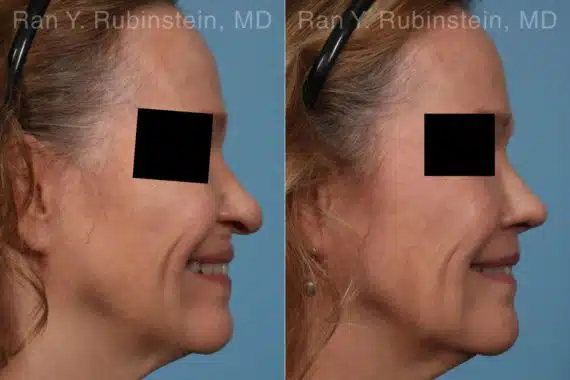A lip lift is a transformative cosmetic procedure that enhances the shape and proportion of the lips by reducing the space between the nose and the upper lip. While the surgery itself is quick and minimally invasive, proper aftercare and understanding the recovery process are key to achieving the best results.
Knowing what to expect day by day can help ensure a smooth healing experience. Below, we break down the lip lift recovery timeline and offer essential tips for optimal healing.

How Long Does it Take to Heal From a Lip Lift?
Full recovery from a lip lift takes approximately 6 to 8 weeks. However, the majority of the healing process occurs within the first week, and by the end of the first month (week 4), most swelling and bruising should have fully subsided. Some mild tightness in the upper lip area may persist for a couple of months, but this will gradually diminish as the tissues fully settle.
Lip Lift Recovery Timeline: What to Expect
The recovery process after a lip lift occurs in distinct phases, with most healing taking place within the first few weeks. Understanding what to expect at each stage can help you manage discomfort, follow proper aftercare instructions, and achieve optimal results. While swelling and bruising are most noticeable in the early days, they gradually subside, revealing your refined lip shape. Below is a detailed breakdown of the recovery timeline to guide you through the lip lift healing process.
Day 1
The day after your lip lift, you will visit your surgeon’s office for a post-operative checkup. During this appointment, your surgical site will be cleaned, and you will receive detailed instructions on at-home care. Your caretaker should accompany you to assist with movement and help remember your surgeon’s recommendations.
Mild to moderate swelling, bruising, and tightness around the lips are common at this stage. Keeping your head elevated, applying cool compresses as directed, and avoiding excessive facial movement will aid in reducing discomfort. Showering is generally permitted, but be gentle when cleansing the incision site. If any fluid buildup is detected, your surgeon may ask you to remain close to the medical facility for further monitoring.
The day after your lip lift
Days 2-4
Swelling and bruising will become more pronounced during days 2-3, often peaking around day 4 before gradually subsiding. You may experience moderate discomfort, tightness, and mild numbness around the lips, which is normal. Your pain medication should be used as prescribed but sparingly, as excessive use may slow the healing process.
To help manage swelling and discomfort, continue keeping your head elevated, applying cool compresses, and limiting excessive facial movements. Temporary numbness or tingling in the area is also common due to post-surgical inflammation. Avoid touching or stretching the lips and follow your surgeon’s recommendations for cleaning and moisturizing the incision site to prevent infection.
During days 2-3
Days 5-7
By days 5-7, you will return to your surgeon’s office for suture removal. This process is quick and generally well-tolerated, as small, delicate instruments are used to minimize discomfort. If lip line incisions were performed, some sutures may be left in place until day 7.
Most patients start feeling significantly better between days 5 and 6, with reduced swelling and bruising. Many no longer require prescription pain medication at this stage. However, some numbness, tightness, and mild discomfort may persist. It’s essential to continue following your surgeon’s post-operative care instructions, avoid excessive facial movements, and keep the incision site clean to prevent complications. While your lips may still look slightly swollen, the overall shape and definition will start becoming more visible as healing progresses.
Suture removal
Weeks 1-2
By the end of the first week and into the second, most patients notice a significant improvement in swelling and bruising. However, mild tightness, stiffness, and some residual numbness may still be present. It’s crucial to continue wearing any prescribed compression or protective dressings at night to ensure optimal healing and minimize strain on the incision site.
Many patients feel comfortable resuming work, school, or light daily activities by the end of the second week, but any strenuous physical activity, including exercise, should still be avoided. Keeping the incision area clean and moisturized, as directed by your surgeon, will help prevent complications and promote a smoother healing process. While the lips may still feel firm or slightly swollen, the overall shape will continue refining over the coming weeks.
Resuming work
Weeks 3-4
By the third and fourth weeks, noticeable swelling and bruising should be nearly gone, and the lips will appear more refined. Any lingering tightness or numbness will continue to improve, though mild stiffness may persist. At this stage, patients can resume normal activities, including social outings, without visible signs of surgery. However, it’s still essential to avoid excessive lip movement and follow any remaining aftercare guidelines.
While the healing process is well underway, final results are still developing. Some patients may require a small steroid injection at their one-month follow-up to soften thickened areas of healing tissue. The lips will continue to settle into their final shape over the coming months, with subtle refinements becoming more apparent.
Resume normal activities
Month 1 and Beyond
By the end of the first month, most swelling should be resolved, and your lips will appear more natural in shape and contour. While some minor tightness and stiffness may still persist, these sensations will continue to improve over the following weeks. At this point, most patients feel completely comfortable resuming all normal activities, including exercise and social events, without noticeable signs of surgery.
Although significant healing has occurred, subtle refinements in lip shape will continue to develop over the next several months. Any lingering swelling should be minimal and typically only noticeable to the patient. Follow-up appointments with your surgeon may include minor treatments, such as a steroid injection, to address any thickened areas of healing tissue. Full results are usually achieved by six months, though final contouring may continue up to a year post-surgery.
Swelling should be resolved
Start Your Journey to Success, Don’t Wait More!
Join our satisfied clients who’ve experienced safe, effective treatments.
Tips for a Smooth Lip Lift Healing Process
A successful recovery after a lip lift depends on following proper aftercare instructions and taking the necessary precautions to promote healing. While the majority of recovery occurs within the first few weeks, small details in your daily routine can make a significant impact on how well your results settle. Below are key do’s and don’ts to ensure a smooth healing process and long-lasting results.
What to Do During Lip Lift Healing
What Not to Do During Lip Lift Healing
Patient Results
* All patients are unique and individual results may vary.
Choosing The Best Surgeon for Your Lip Lift
Selecting a highly skilled and experienced plastic surgeon is essential for achieving natural-looking and long-lasting results from your lip lift. A board-certified surgeon with expertise in facial cosmetic procedures will ensure precision, safety, and a smooth recovery.
Dr. Ran Y. Rubinstein, a double-board-certified facial plastic surgeon, specializes in lip lift procedures and has helped countless patients achieve enhanced facial harmony with beautifully contoured lips. His expertise ensures a safe, effective procedure with minimal downtime. Call us today at (845) 863-1772 to schedule a consultation and take the first step toward your ideal lip enhancement.


